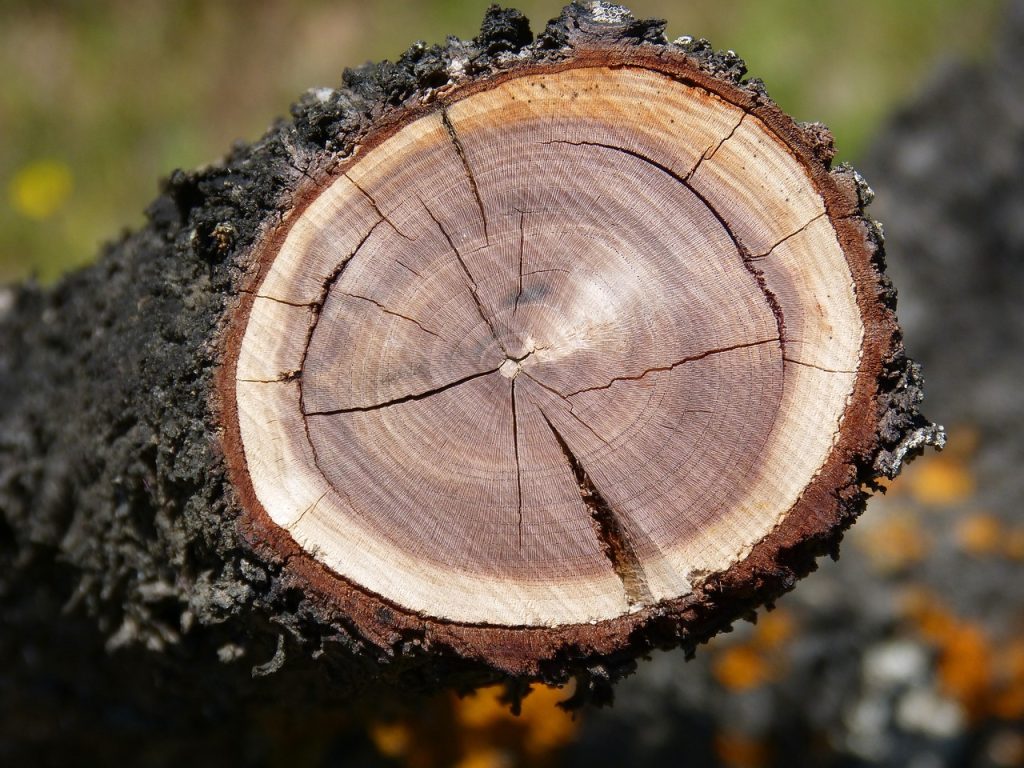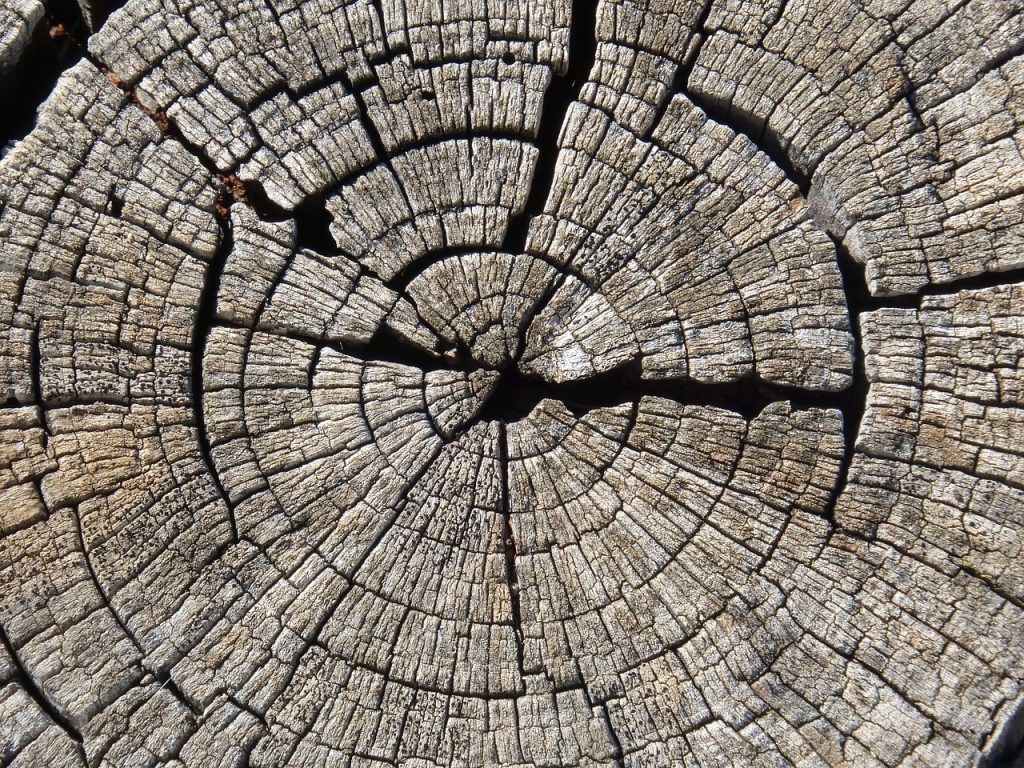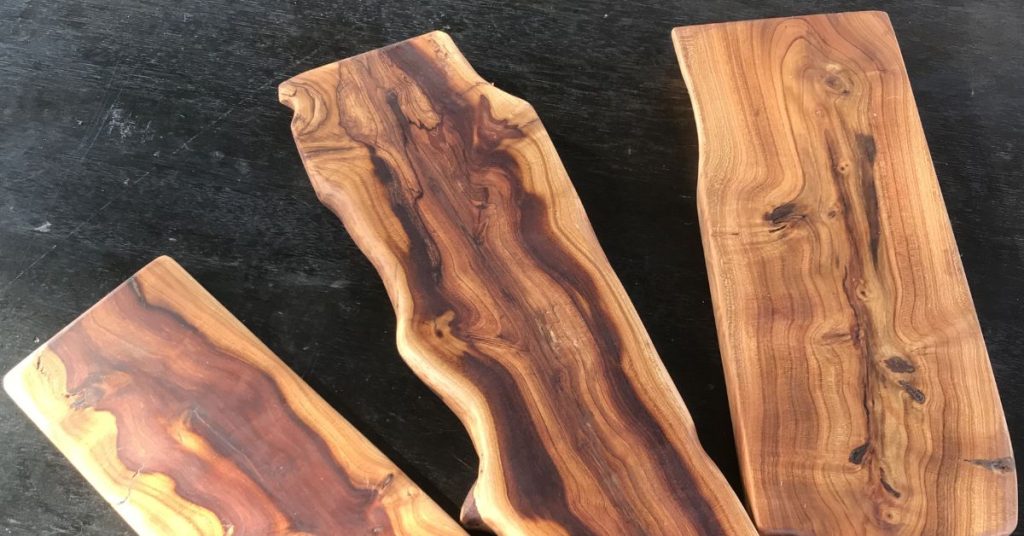Almond Wood: A Strong And Durable Hardwood Compared To Other Options
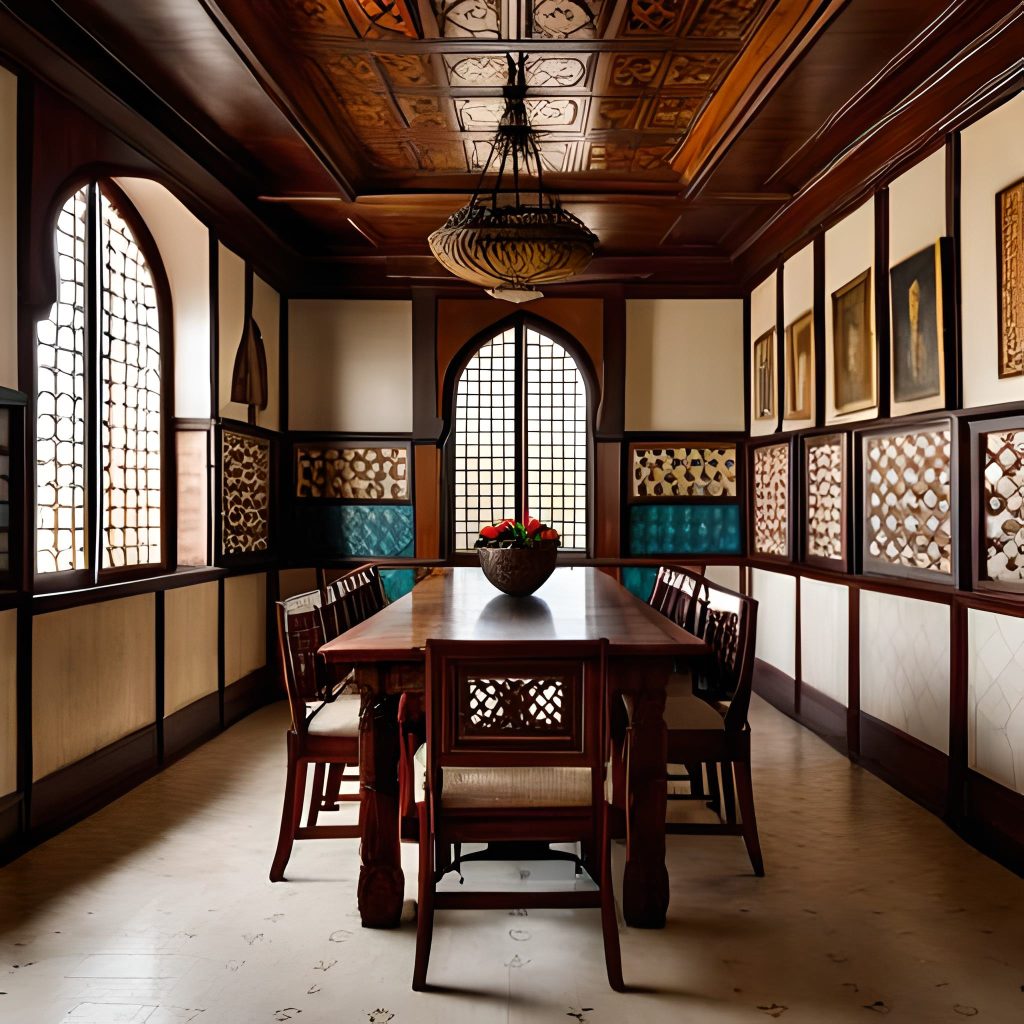
Are you looking for a strong and durable hardwood to use in your next woodworking project? Almond wood might be a perfect choice! This versatile material is well-suited to many applications, from furniture making to cabinetry. In this article, we’ll discuss why almond wood stands out as an excellent option when compared to other types of hardwoods.
When it comes to strength and durability, almond wood is right up there with some of the best materials on the market. It’s incredibly tough yet also lightweight which makes it ideal for creating intricate designs or even large items like tables.
The grain pattern of almond wood adds an extra layer of beauty too – its distinctive markings make any piece look unique. Plus, if you’re looking for something that can be used outdoors without fear of warping or cracking, then almond wood should certainly be on your list!
Overview Of Almond Wood
Almond wood is a type of hardwood with many unique qualities. It’s strong and durable, making it an ideal choice for furniture and other woodworking projects. Compared to other hardwoods, almond wood is one of the strongest and most resilient options available. This makes it suitable for use in both indoor and outdoor settings. In terms of appearance, almond wood has a light yellowish-orange hue that gives off a warm ambiance when used in interior decorating applications. Its density also helps make it highly resistant to decay, rot, or insect infestation over time.
Overall, almond wood stands out among other types of hardwood as being particularly strong and durable while still providing a unique look and feel to any project. With its strength and beauty, almond wood is an excellent choice for those looking for quality materials for their next project.
Properties And Characteristics
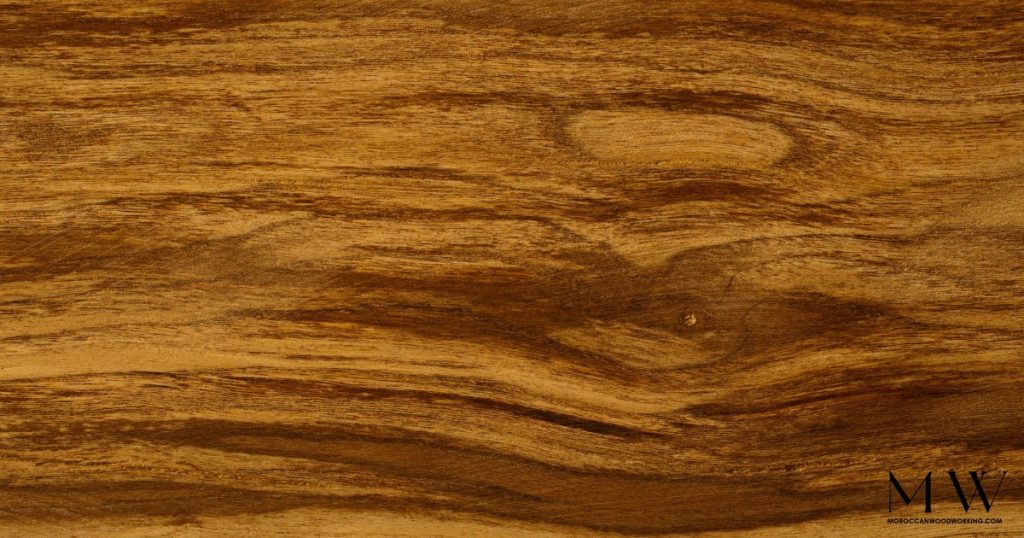
Almond wood is renowned for its properties and characteristics. Its high structural integrity makes it especially suitable for a wide range of applications, including furniture making and flooring. It has excellent resistance to decay as well as pests, making it ideal for outdoor use. Additionally, almond wood’s superior strength gives it long-lasting durability compared to other hardwoods.
When working with almond wood in carpentry projects, one will find that the grain structure is generally fine and uniform which allows for smooth cutting and finishing. The color varies from tan to light brown and darkens over time when exposed to sunlight or air pollution. The distinctive look of this type of hardwood adds character and beauty to any project.
The tightness of the pores also contributes to their strength and longevity – reducing the risk of warping or splitting due to seasonal changes in humidity levels. Moreover, this unique feature also reduces shrinkage when drying out after wetting causing less damage than some softer woods such as pine would suffer upon contact with water.
Overall, almond wood has many desirable qualities that make it an attractive choice for those looking for a strong yet beautiful material for their next carpentry project. With proper care, regular maintenance, and occasional repairs, this durable hardwood can provide years of enjoyment
Strength And Weight
Having discussed the properties and characteristics of almond wood, we will now examine its strength and weight. Almond wood is a hardwood that is extremely strong and durable compared to other options. It has an impressive strength-to-weight ratio, making it ideal for furniture construction or any other application where durability and stability are essential.
The elasticity of almond wood gives it the ability to resist shock better than softer woods such as pine or spruce. It also resists splitting due to its high density; meaning it can be used in areas where there may be changes in temperature or humidity without compromising its structural integrity. In addition, this hardwood stands up well to wear and tear over time, which makes it a great choice for both interior and exterior projects.
When considering the overall weight of almond wood, it is important to note that while heavier than many other hardwoods, its superior strength gives it added durability and longevity when crafted into furniture pieces or architectural elements. This means that despite being slightly heavier, using almond wood can result in lighter items with improved structure and sturdiness.
For those looking for an exceptionally strong yet versatile hardwood option, almond wood should certainly be considered since it offers reliable power along with superior durability. Its unique blend of properties makes it a widely sought-after material for a variety of applications – from building frames to creating intricate furniture designs – so you know you’re getting a quality product each time.
Color And Grain Pattern
Almond wood is known for its unique coloring, which varies from a light yellow-brown to nearly white. The color of the wood can vary depending on the region it’s sourced from and how long it was exposed to sunlight. Its grain pattern is usually straight but sometimes contains wavy or interlocked grains that add texture and visual interest. The type of almond wood used will also affect the color, with some species producing deeper reddish tones while others offer lighter colors.
When working with this hardwood, you’ll notice that its grain structure has a slightly open figure due to the wide medullary rays found in each growth ring. This gives almond wood an eye-catching look when finished properly. It takes stain well, allowing you to customize its appearance even more by adding darker hues or whitewashing it if desired. Additionally, it responds nicely to other finishing techniques such as sanding and polishing.
When comparing different types of woods based solely on their looks, almond wood’s subtle yet attractive characteristics make it stand out among many popular options like oak and pine. While these two traditional favorites are excellent choices for certain projects, they don’t have quite the same level of distinction as almond wood does in terms of both color and grain pattern.
Overall, almond wood offers a great combination of strength and beauty that makes it ideal for furniture making, flooring installation, trim work, cabinetry construction, and much more. If you’re looking for something special that stands up against wear and tear over time without sacrificing aesthetics then almond wood should be considered for your next project!
Maintenance Requirements
Almond wood is a beautiful and versatile hardwood that requires some routine maintenance to keep it looking its best. Its durability makes it an ideal choice for any type of project or furniture, but like all woods, almond wood needs proper care to maintain its strength and beauty. Here are the essential things you should know about almond wood maintenance:
- Cleaning: To ensure your almond wood’s appearance remains intact, regular cleanings are necessary. Regular dusting with a soft cloth will help remove dirt and debris from the grain structure of the wood. For deeper cleaning use a mild detergent mixed with water and lightly scrub the surface using a medium-bristled brush. Make sure to dry afterward as well.
- Finishing: Applying a protective finish can not only enhance the look and feel of almond wood but also increase its durability over time. A good quality oil-based product such as tung oil works great on this type of hardwood because it penetrates deep into the grain structure giving it added protection against moisture damage and everyday wear and tear.
- Protection: Almond wood is heat resistant so it won’t be damaged by hot dishes or utensils placed directly onto its surface; however, coasters should still be used when possible to provide extra protection from spills or condensation buildup due to humidity changes in the environment. Additionally, the place felt pads underneath items moved across the surface frequently such as chairs or tables to reduce friction between them which could cause scratches or dents over time.
Finally, avoid exposure to direct sunlight if possible since prolonged UV rays can fade even highly durable woods like almonds over time. With these few simple steps, you can ensure your projects made out of this strong hardwood remain looking their best for years to come!
Advantages Over Other Woods
Almond wood is renowned for its superior strength, durability, and flexibility compared to other woods. It offers a range of advantages over alternative materials:
- Its natural strength provides the ability to create strong structures with minimal reinforcement.
- The hardness and tight grain pattern make it highly resistant to wear and tear from heavy usage or exposure to harsh weather conditions.
- Almond wood’s flexibility allows craftsmen to shape it into intricate designs that are difficult or impossible with other hardwoods.
- Its stability ensures pieces created out of almond wood will retain their form, even when exposed to extreme temperatures or humidity level fluctuation.
- Maintenance requirements are low as almond wood doesn’t require regular treatments like some other types of timber does.
Overall, almond wood stands out due to its combination of strength, durability, and flexibility – making it an ideal material for creating cozy furniture, sculptures, and architectural features that last for generations.
Disadvantages Of Almond Wood
Despite its strength and durability, almond wood has some disadvantages that must be taken into account when deciding whether it is the right hardwood for a particular project. One of the main drawbacks to using almond wood is its limited availability. Almond trees are rare in many parts of the world, making them difficult to source unless specifically requested.
In addition, although almond wood is strong and durable, it does have a relatively short lifespan compared to other hardwoods such as oak or mahogany. This means it will need more frequent maintenance and replacement over time, which can add up quickly if not planned for properly.
Another disadvantage to consider with almond wood is its price point; due to its scarcity, it tends to be much more expensive than comparable woods such as maple or cherry. Additionally, because almond wood can be prone to warping and cracking if not sealed properly, extra care needs to be taken during the finishing process. Specialized tools may also be required to achieve proper results.
Overall, while almond wood does offer superior strength and durability compared to many other options on the market today, these benefits come at a cost that should be weighed carefully against potential disadvantages before making any decisions about what type of hardwood should be used for a given project.
Popular Uses For Almond Wood
Almond wood is a popular choice for many furniture and home décor projects. Its unique hue, grain pattern, and texture make it an attractive material to work with. Whether used in the form of flooring, tables, cabinets, or doors – almond wood adds elegance to any living space.
When creating furniture pieces, almond wood provides the perfect balance between strength and style. Its strong yet lightweight properties make it ideal for crafting items such as chairs, benches, and bed frames. Additionally, its smooth finish means making intricate details on these furnishings is easy. As a result, almond wood has become a popular choice for bespoke furniture makers all over the world.
For interior decorating purposes too, almond wood provides much versatility. From kitchen countertops and island tops; to side tables and wall paneling – there are endless possibilities when using this hardwood species. Almond wood floors provide both durability and beauty; while also offering protection against splinters that other woods may not offer. In addition, its light color allows homeowners to pair it with different types of rugs and accessories like no other type of wood can do.
Given its durability and beautiful aesthetic qualities, almond wood is becoming increasingly sought-after for use in residential homes as well as commercial spaces alike. It is often seen gracing restaurants’ walls or adorning luxury shops with stunning designs crafted from solid slabs of this special timber species. With proper care and maintenance, this remarkable material will continue to bring joy into our lives for years to come!
Projects That Benefit From Almond Wood
Almond wood is an excellent choice for a variety of projects,
especially those requiring strong and durable hardwood. It’s perfect for furniture making, flooring, and other woodworking projects that demand superior quality. Almond wood has the strength to hold up against heavy use while still looking beautiful in any home or office.
When it comes to building furniture with almond wood, you can be sure that your project will last for years. The tight grain structure makes it resistant to warping and cracking, so you don’t have to worry about costly repairs down the line. Its strength also means that larger pieces are more stable than other types of wood. And its natural beauty adds warmth and character to any room where it’s used.
For those who want a hardwood floor without compromise, almond wood is an ideal choice. Unlike softer woods like pine or birch, an almond doesn’t require frequent refinishing due to wear and tear from foot traffic. A properly sealed surface can look great for decades if maintained regularly with waxes or oils as needed. Plus, since almond wood floors are naturally harder than most other options, they’re less likely to show dents or scratches over time–an important consideration when choosing this type of flooring material!
Almond wood offers all kinds of benefits when working on various projects around the house or office. Whether you need sturdy furniture pieces or long-lasting flooring solutions, almond provides durability and style that won’t let you down. With proper maintenance and care, these projects will stand the test of time–making them well worth investing in!
Alternatives To Almond Wood
“The best tool for the job is the one you have in hand,” goes the adage. When choosing hardwood, it’s important to consider all of your options before deciding on almond wood. Mahogany, maple, pine, walnut, and cedar are all great alternatives that may suit your project better than almond wood.
Mahogany offers good strength and stability at an affordable price point. Maple is also plenty strong but can come with a steep cost due to its popularity among furniture makers. Pine is typically used as a softwood, so if you’re looking for durability then this might not be the best choice. Walnut has a beautiful grain pattern that gives any piece of furniture class and sophistication. Lastly, cedar provides excellent resistance against warping or splitting over time and can give off an aromatic smell when freshly cut – perfect for outdoor projects!
When shopping for hardwoods, keep in mind what type of finish you plan to put on your project afterward. A clear coat will bring out the beauty of each wood species differently; mahogany takes stain well whereas maple can look blotchy when stained too darkly. You’ll want to make sure you consider these things when selecting which hardwood to use.
No matter which option you choose, investing in quality lumber will ensure that whatever project you undertake stands up to wear and tear over time without breaking down easily – something every craftsman should strive for!
Frequently Asked Questions
What Is The Lifespan Of Almond Wood?
When it comes to woodworking, almond wood is one of the most popular choices for a variety of projects. But how long does this hardwood last? Knowing the lifespan of almond wood can help inform your decision when choosing materials for any project.
One interesting statistic on the longevity of almond wood is that it was found to be more durable than other types of wood in laboratory tests. This demonstrates its strength and durability compared to other options, making almond wood an excellent choice for those looking for higher-quality materials with greater longevity.
In terms of its lifespan, studies have shown that proper care and maintenance can extend the life expectancy of almond wood up to 25 years or longer! To ensure you get the longest life out of your project, make sure to use high-quality finishes like sealants and varnishes which will protect against water damage, UV rays, and general wear and tear. Additionally, make sure that you’re storing your finished products away from moisture sources such as basements or bathrooms where humidity levels are typically too high.
For those looking for strong and durable hardwood with a long lifespan, almond wood should be at the top of their list! Not only does it stand up well against different environmental conditions over time but also provides beautiful results due to its natural grain patterning. With basic upkeep and maintenance techniques applied regularly, you’ll be able to enjoy your creations made from almond wood for many years down the road without needing replacement anytime soon!
How Does Almond Wood Compare To Other Hardwoods In Terms Of Fire Resistance?
When considering fire resistance, almond wood is a great option. It stands out among other hardwoods for its ability to resist heat and flames. Almond wood has the advantage of being extremely durable when exposed to high temperatures. This makes it an ideal choice when looking for a material that can withstand fires without succumbing to them quickly.
The fire resistance of almond wood is due in large part to its composition. Almond wood contains lignin, which gives it added protection against burning or melting at higher temperatures than regular wood. Additionally, the structure of almond wood’s fibers also allows it to retain moisture more efficiently than other hardwood species, making it even more resistant to fire damage.
In comparison with other hardwoods, such as oak or maple, almond wood boasts superior fire-resistant abilities. Oak and maple are both highly combustible materials and will burn much quicker than almond wood if subjected to open flame or extreme heat levels. However, because of its properties mentioned above, almond wood provides a greater level of protection from fires and smoke that would otherwise severely damage these traditional hardwood options.
Additionally, while some may worry about the cost associated with using almond wood over traditional hardwoods like oak or maple, this additional layer of defense against fires helps save money in the long run by helping prevent costly damage repairs caused by unexpected blazes. Thus, choosing almond wood over other hardwoods for improved fire resistance could be seen as an investment rather than an expense.
Is Almond Wood Suitable For Outdoor Use?
When considering outdoor projects, almond wood is an excellent choice. Its strong and durable properties make it suitable for use in a variety of applications. But is almond wood suitable for outdoor use specifically? Let’s take a closer look at what makes this hardwood stand out from other options when used outdoors.
Almond wood has many characteristics that make it ideal for outdoor uses. It resists decay and rots better than most other woods due to its natural oils and density making it less susceptible to moisture damage caused by weathering or wet conditions. Additionally, the surface hardness of almond wood provides superior protection against abrasion and wear over time, allowing for long-term use without needing frequent maintenance or repairs.
For larger outdoor structures such as decks or patio furniture, almond wood is also known to be incredibly stable. This means that even with changes in temperature or humidity, the structure will remain intact rather than warping or splitting like some other types of wood might if exposed to these environmental factors. The strength of almond wood also gives it greater load-bearing capacity which makes it perfect for those looking to build something more substantial outdoors that can withstand heavier weight loads while still providing support.
Overall, almond wood is one of the best choices when looking into using a hardwood material for any type of outdoor application. Not only does it have great durability and stability but its resistance to rotting and weathering ensures that your project will last longer with less maintenance required over time compared to other materials available on the market today.
Conclusion
Almond wood is an excellent choice for many projects, especially those requiring strength and durability. Its long lifespan makes it a great option for furniture or other items that need to last through the years. The fire resistance of almond wood also gives it an advantage over some other hardwoods when used in areas prone to high temperatures. And aside from being aesthetically pleasing, its lack of health hazards makes it safe to use indoors as well.
But because of its unique characteristics, working with almond wood can be challenging at times. Special tools may be necessary to get the job done right. But don’t let this deter you; the reward of finishing something beautiful made out of almond wood will make all your efforts worthwhile. Once complete, you’ll have a piece that’s sure to stand up against harsh weather conditions if intended for outdoor use yet still look stunning inside your home or office space.
Experience the Timeless Beauty of Moroccan Craftsmanship moroccanwoodworking.com to browse Moroccan Woodworking’s extensive collection of authentic Moroccan home decor and furniture. With their commitment to quality and craftsmanship, you can be assured that every piece you purchase is a unique work of art that will elevate your home’s style. Don’t miss the opportunity to experience the timeless beauty of Moroccan craftsmanship – start shopping now and transform your living space.

